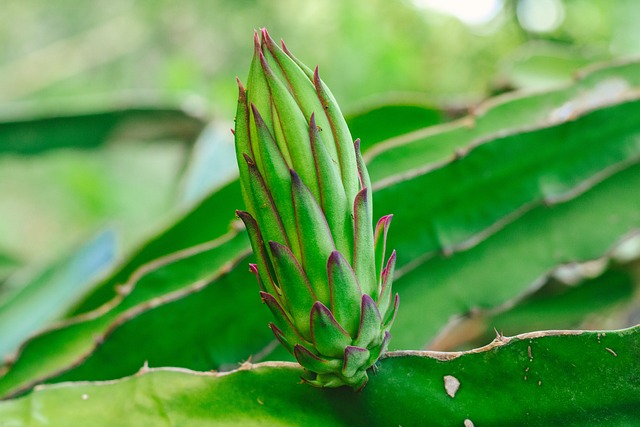Dragon fruit, also known as pitaya, is a tropical fruit that has become increasingly popular in recent years due to its unique taste and health benefits. It is a low-calorie fruit that is high in fiber, antioxidants, and other essential nutrients. Dragon fruit farming in India is gaining popularity due to the fruit’s high demand in domestic and international markets. In this article, we will discuss the tips for optimal growth and harvest of dragon fruit in India.
Choosing the Right Variety of Dragon Fruit
There are three main types of dragon fruit – red flesh, white flesh, and yellow flesh. The red and white flesh varieties are the most commonly grown in India. The most popular variety of dragon fruit in India is the white-fleshed variety. It is important to choose the right variety that is suitable for your region’s climate and soil conditions.
Planting Dragon Fruit
Dragon fruit can be propagated from seeds or cuttings. However, the most common method of propagation is through cuttings. The best time to plant dragon fruit in India is during the rainy season when the soil is moist and temperatures are moderate. The ideal temperature for dragon fruit growth is between 20°C to 35°C. The plant requires well-draining soil with a pH level between 6.0 to 7.0. It is also essential to ensure that the soil is rich in organic matter.
Spacing
Dragon fruit plants require enough space to grow and spread out. The recommended spacing between the plants is 2.5 to 3 meters. This spacing will allow enough space for the plants to grow and will also provide enough sunlight and air circulation.
Watering
Dragon fruit plants require moderate watering, especially during the hot and dry summer months. However, it is essential not to overwater the plant as it can lead to root rot. The plant should be watered once or twice a week, depending on the weather conditions. It is also recommended to mulch the plant to retain soil moisture.
Fertilization
Dragon fruit plants require regular fertilization to promote healthy growth and development. The plant should be fertilized with organic manure or a balanced fertilizer every two to three months during the growing season. However, it is important not to over-fertilize the plant as it can lead to excessive vegetative growth and reduced fruit yield.
Pruning
Pruning is an essential part of dragon fruit farming. Pruning should be done to promote plant growth, increase fruit yield, and improve the overall health of the plant. The best time to prune dragon fruit plants is during the winter months when the plant is in its dormant phase. The plant should be pruned to remove dead or diseased branches, as well as to remove any unwanted growth.
Pest and Disease Control
Dragon fruit plants are susceptible to pests and diseases, including mealybugs, scales, and root rot. It is essential to maintain proper hygiene and sanitation practices in the orchard to prevent the spread of diseases. In case of infestation, it is recommended to use organic pest control measures, such as neem oil, garlic extract, or hot pepper spray.
Harvesting
The fruit takes about 30-35 days to mature after flowering. Dragon fruit is harvested when it is fully ripe and has a bright color. The fruit should be harvested by twisting it gently until it detaches from the plant. It is recommended to harvest the fruit early in the morning or late in the evening when the temperature is cool.
Conclusion: Dragon fruit farming in India can be a profitable and rewarding venture, but it requires careful planning and attention to detail. By following the tips and techniques outlined in this article, farmers can ensure optimal growth and harvest of their dragon fruit plants. With its unique taste and health benefits, dragon fruit is sure to be a hit with consumers in India and around the world. It is important to remember that successful dragon fruit farming involves a lot of hard work, patience, and investment, but the results can be well worth it in the end. By choosing the right variety, preparing the soil properly, providing the necessary care and nutrition, and controlling pests and diseases, farmers can enjoy a bountiful harvest of this exotic and nutritious fruit. As with any agricultural endeavor, it is important to stay informed and up-to-date on the latest techniques and technologies for dragon fruit farming. With a little effort and dedication, farmers can enjoy the sweet taste of success in the dragon fruit market.
